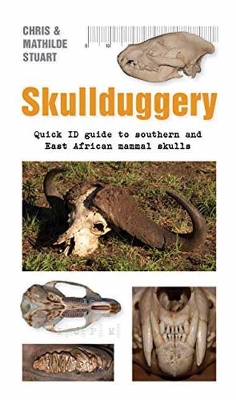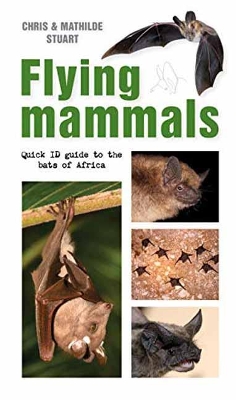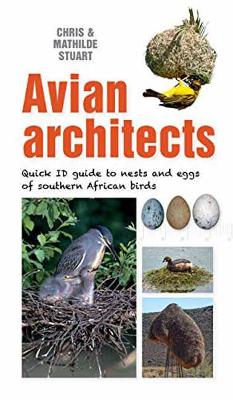Quick ID guides
3 total works
In this short but informative guide, trusted authors Chris and Mathilde Stuart turn mammal ID on its head – literally. The identification of mammal skulls is the subject of this latest addition to the quirky ‘Quick Guide’ series, and covers the most common skulls readers are likely to encounter in the wild – from easily recognisable species such as elephant, hippo, rhino, baboons, antelope, whales and dolphins, to the more challenging family groups: dogs, cats, hyaenas, equids, pigs, civets and genets, mongooses, rats and mice, bats, sengis, shrews, moles, hares and rabbits, hyrax, and squirrels. Each entry features: Close-up photographs showing the entire skull, teeth and, where available, upper and lower jaws; Pointers to diagnostic features; Average measurement for skull length; Short description highlighting main features of each skull and tooth structure; Dental formula for teeth in upper and lower jaws. A brief introduction, with labelled photographs, covers anatomy as well as dentition; and a quick-reference photographic key to the main animal groups appears on the inside front cover.
Following the success of earlier ‘Quick Guide’ books, this slim little volume tackles one of the few groups of mammals that can fly. Divided into large fruit bats and smaller insect-eating bats, this ultimate quick identification guide covers Africa’s 12 bat families. An informative introduction touches on evolution, flight, echolocation and reproduction, demystifying an animal that is all too often misunderstood. The text describes the facial characteristics and wing shapes common to each family and points out features that can help to distinguish between them. But it is the photographs and annotated line drawings that are most useful for identification. They include bats in flight and roosting sites, and close-ups of facial structures and wings that highlight key diagnostic attributes. An added extra is a photographic section showing the skulls of a variety bats.
Another title in the ‘Quick Guide’ series, this compact little book is a handy identification guide to the surprising variety of nests built by southern African birds. Covering multiple species, it is arranged according to nest type – ground, woven, stick, cup, mud-pellet and domed, as well as nests in tree holes, on water, on cli s and in scrapes on the ground. It is packed with photographs and illustrations showing the ingenuity of the designs, the birds that built them, and the eggs that are laid in them. In pithy fashion, the text – matched to the photographs – describes: nesting site and nest structure; building materials used to construct outer and inner layers; nesting habits of the architects; clutch size. A simple key to nest types on the inside front cover directs readers to the relevant section in the book. Sales points: Quick reference on a popular subject; packed with full-colour images of birds and nests; highly regarded authors; excellent price point.


